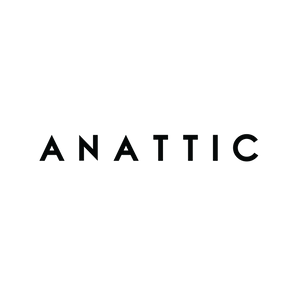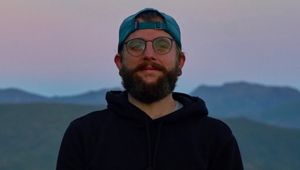
The Directors: Tami Doncic

Tami is a Serbian filmmaker, raised in the UK. She studied Directing Commercials at the acclaimed National Film and Television School, an MA in Visual Anthropology from the GCVA at the University of Manchester, and Film and Television Production at the department of TFTS at Aberystwyth University.
Tami has worked in production, post-production, theatre and research. She owns a wine shop and creative studio on the side, which she manages and is creative director!
Tami has a lust for life and too many interests to count, including CrossFit, running, travel, Japan, cinema and writing. She is a lifelong metalhead and believes there is no stress a sludgy riff can’t fix. The things she could not live without are bread, a camera, black coffee and freedom to travel. Tami is fluent in Serbian and several other Slavic languages, and is currently learning Russian and Japanese. More than anything, Tami loves learning new things - throw a topic her way and she’ll learn everything there is to know about it.
Name: Tami Doncic
Location: Manchester/UK Wide
Repped by/in: Anattic
How do you approach creating a treatment for a spot?
Tami> I come from both an academic and artistic background, so I like to think of my methods as controlled chaos. I studied Visual Anthropology as well as Directing and Experimental Documentary Production, but constantly looked for ways to turn the practises on their head, so academic research methods go hand in hand with wild creative freedom for me.
After looking over the brief provided, I’ll do an initial brainstorm. The root of many of my ideas are images, so I’ll visualise photographs or stills in my head and write loose ideas and scenes. I then do research on the brand and analyse the brief in more detail. What is the message? Who is the audience? Does the spot sit in a larger campaign context?
I cross out the first five ideas (these are most likely the obvious ones that most people will have thought of!) and any that play on stereotypes, tired tropes or overused cliches. Choosing a final idea is often a creative wrestling match with myself!
In my treatments, I like to lay out the context for the idea, the script, the overall visual mood, the sound, the characters, subtext and any specific editing that may be utilised, and an animatic if the idea is difficult to actualise in words.
If the script is for a brand that you're not familiar with/ don’t have a big affinity with or a market you're new to, how important is it for you to do research and understand that strategic and contextual side of the ad? If it’s important to you, how do you do it?
Tami> Understanding a brand, their values, their demographic and what they have done before helps me as a director as it ensures I understand the contextual and strategic side of their campaign. When researching, I ask myself questions such as - What has and hasn’t worked before? Who is this campaign for? Who is the audience? What is the end goal? I look at their brand values,
their tone of voice, past campaigns, who they have worked with before, their key demographic, etc. It’s crucial to understand a brand and the market it sits in, no matter what the project itself is, in order to achieve what the brand is attempting to do.
What elements of a script sets one apart from the other and what sort of scripts get you excited to shoot them?
Tami> A good script focuses on feelings and subtext rather than stereotypes, tropes or the glaringly obvious parts of the message. I love scripts where the client, be that a brand or musician, has an idea of what they want to say, and is willing to let the director interpret that idea. There is nothing worse than a completely open brief with no hint of guidance, but equally it isn’t very fun working on a strict script with no wiggle room.
For you, what is the most important working relationship for a director to have with another person in making an ad? And why?
Tami> Practically speaking my biggest ally as a director is always the producer - having a producer that is on the same page as me and fighting my corner is a crucial and invaluable part of a successful project. Creatively, the relationship with the cinematographer is extremely important to me and I look to work with DoPs that are hungry to push boundaries, try new things and aren’t scared of trying things they haven’t done before.
What type of work are you most passionate about - is there a particular genre or subject matter or style you are most drawn to?
Tami> I am an extremely visual director and am drawn to anything involving striking visuals, grit, colour and movement. Coming from both an anthropology and photography background, I am drawn to working on projects that combine striking, experimental visuals with human stories - documentary, fashion and travel. I abhor anything to clean, overlit or polished. The genres and styles that I am most drawn to are found footage films, contemporary dance, conceptual music videos, New Wave films and skate videos,
How do you strike the balance between being open/collaborative with the agency and brand client while also protecting the idea?
Tami> Creating anything is such a complex process that it is important to always keep in mind context, relationships and most importantly what the intended outcome is. I try to always be flexible and open to collaboration and suggestions, whilst keeping in mind what the end goal is. If I strongly believe that something an agency is asking for won’t work for the idea or end goal, I will defend that belief.
What are your thoughts on opening up the production world to a more diverse pool of talent? Are you open to mentoring and apprenticeships on set?
Tami> Definitely! The world of production is long overdue for an overhaul. Entering the industry is an incredibly difficult and, for a lot of people, brutal process. More needs to be done to ensure that talent is not stifled by geography, circumstance, nepotism, gatekeeping and lack of networking opportunities.
What’s your relationship with new technology and, if at all, how do you incorporate future-facing tech into your work?
Tami> New technology and techniques fascinate me, especially if I can find ways to apply it to the things I want to do, or if they can elevate and improve on current processes. On the other hand, I don’t tend to fall over myself to grab onto gimmicks or short lived trends - classic motion pictures (2D images and sound working in a sequence) are timeless and will transcend everything else (VR, 4D, etc).









